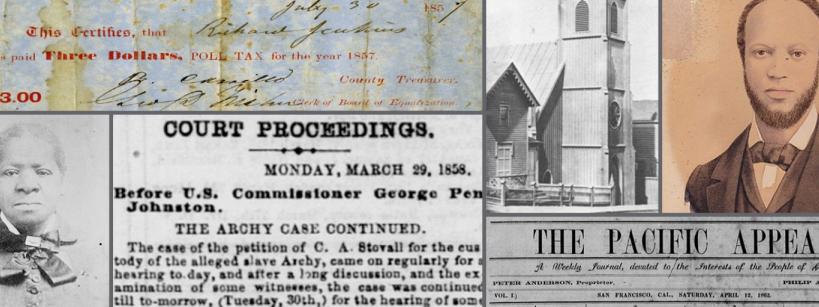Discrimination and Activism: African Americans, 1849-1865
Scroll down for image credits/citations.
Class Lesson
Students will learn that the fight against discriminatory government policies against African Americans began long before the Civil Rights movements in the 1950s and 60s. Focusing on early California (1849-1865), students will learn about the state’s discriminatory policy towards African Americans, analyze how African Americans fought against these policies, and evaluate the result. Students are given the opportunity to connect to today by researching how Black Americans are still battling for equal rights today and connect to themselves and their community by exploring discrimination in their own lives and ways to take action against it.
Standards
CA HSS: 8.8
CA HSS: 11.10
Lesson Resources
8th Grade Lesson:
11th Grade Lesson:
Teaching Tips for Different Learning Environments
Whole Class In-Person Learning: Students read the Overview and Background utilizing annotation tools or class discussion to introduce the lesson. Together, the class reads the policy in Part I-A. Students then work in groups to discuss what type of action they think was taken to combat the discriminatory policy and share out with the class. In Part I-B, individual students can be given a response by African Americans to read and share with the class. Together the class answer the questions for each response and evaluate the result. Students can research current discriminatory policies against Black Americans – Part II - individually or in groups and share with the class. Students complete Part III individually and share with class.
Whole Class Distance Learning: The teacher models the activity (Part I – A and B) using the policy of enslavement. Students are divided into groups in breakout rooms and are assigned either Racial Testimony, African American Suffrage, or Unequal Education. In the groups, students complete Part I-A discussing and documenting the policy and the type of response that might have been taken documenting it on the note-taking sheet provided. Students work together to read the responses in Part I – B and answer the questions about the responses and the result. Groups come back and share with the whole class. Students can research current discriminatory policies against Black Americans – Part II - individually or in groups and share with the class. Students complete Part III individually and share with class.
Associated Education Resources
Image Collage:
Poll Tax. Edson Smith Photo Collection/Courtesy of the Santa Barbara Public Library. Retrieved February 3, 2021, from: https://newsroom.ucla.edu/file?fid=5f75192d2cfac252edd40924
Bethel African Methodist Episcopal Church in San Francisco. Montesano, P. (1973). San Francisco Black Churches in the Early 1860's: Political Pressure Group. California Historical Quarterly, 52(2), 145-152. Retrieved February 3, 2021, from: http://www.jstor.org/stable/25157430
Jeremiah Burke Sanderson. Wikimedia Commons contributors, "File:W2fk4j5tv4y0nv53.jpg,"Wikimedia Commons, the free media repository, Retrieved February 3, 2021, from: https://commons.wikimedia.org/w/index.php?title=File:W2fk4j5tv4y0nv53.jpg&oldid=513789336
Columbia gazette. [volume] (Columbia, Tuolumne County, Calif.), 02 Sept. 1854. Chronicling America: Historic American Newspapers. Lib. of Congress, page 4. Retrieved on February 3, 2021 from https://chroniclingamerica.loc.gov/lccn/sn84038765/1854-09-02/ed-1/seq-1/
Biddy Mason. Security Pacific National Bank Photo Collection / Los Angeles Public Library, A-001-507, retrieved February 3, 2021, from: https://tessa.lapl.org/cdm/singleitem/collection/photos/id/93182/rec/1




